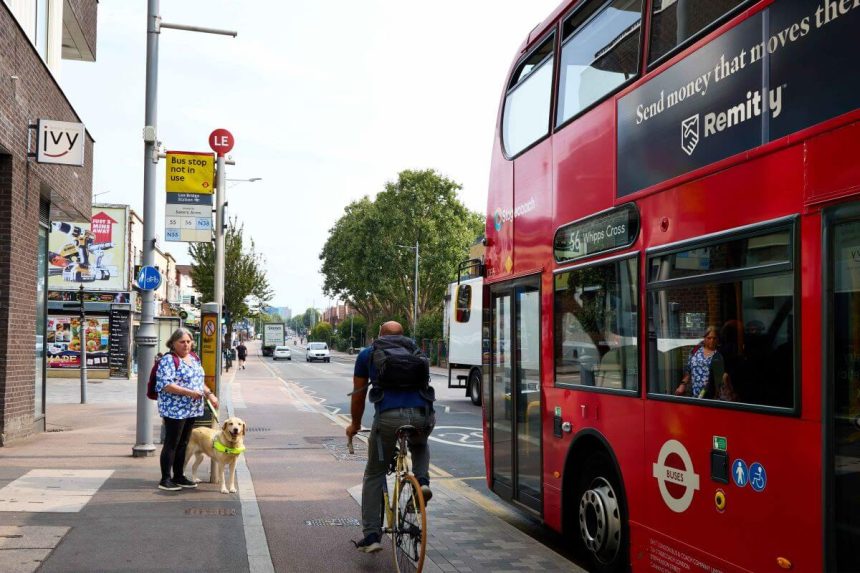Few bus-related issues provoke as controversial a reaction as “floating” bus stops. Also known as a “bus stop bypass”, the design involves an uninterrupted cycle lane in between the pavement and the bus stop such that the latter is in an “island”.
They are particularly common in cycle-friendly cities such as London and Cambridge, with the former having more than 160 of them.
Supporters of the design say safety is much improved for cyclists because buses do not have to cut across the bike lane to reach the bus stop.
Bus drivers also tend to like the layout for the same reason. However, critics argue they are dangerous for pedestrians, particularly those with a disability such as sight impairments.
Although such layouts often include “mini zebra crossings” across the cycle lane, campaign groups say many cyclists ignore them and cause danger to those who are partially sighted.
In October, London Mayor Sadiq Khan refused to pause the roll-out of more floating bus stops in the capital, responding to such a request from Elly Baker, Chair of the London Assembly Transport Committee.
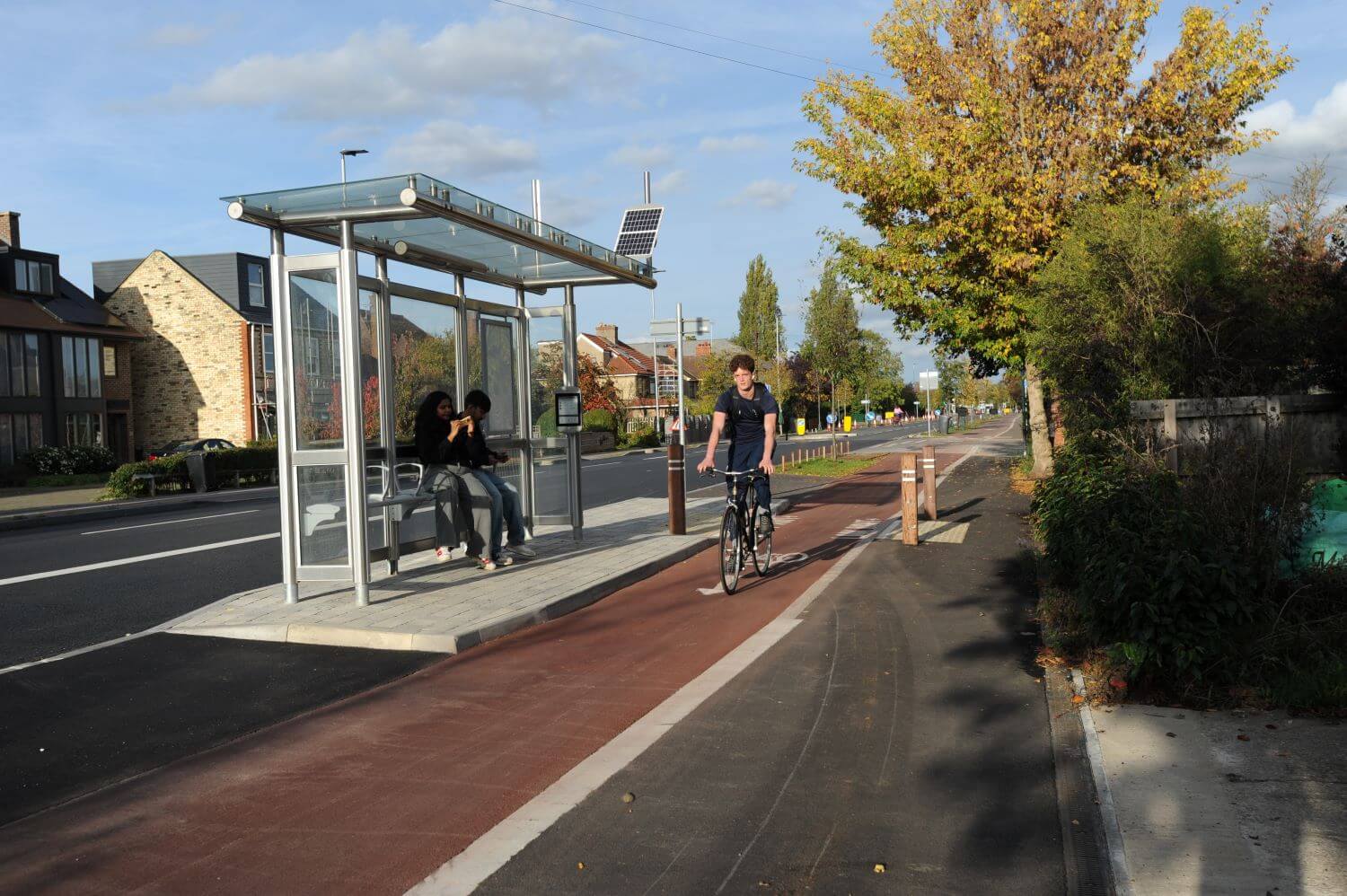
The Mayor’s office said it was working with disability and accessibility groups to look at improvements to the design.
In 2023, Mr Khan said: “It is generally understood in transport systems across the country and around the world that bus stop bypasses are the safest way to segregate cyclists and road traffic in many locations.”
The Committee Chair had alluded to University College London (UCL) research commissioned by the charity Guide Dogs which called for a halt on future installations pending more research.
Meanwhile, a petition organised by National Federation of the Blind UK (NFB) to not only stop the creation of new floating bus stops but also remove existing ones, which has been signed by more than 290 groups, was handed to 10 Downing Street earlier this year.
They have to be removed and access has to be restored back to that pavement so blind, visually impaired, and deaf-blind people can get on and off the bus without having to cross the cycle lane – NFB Street Access Campaign Coordinator Sarah Gayton
A 2024 Transport for London (TfL) review into floating bus stops concluded the risk of pedestrian injury caused by them is “very low”.
It said only six injuries — affecting five pedestrians and one e-scooter user — had been reported over a three-year period. It added: “To put this in context, 11,400 pedestrians were injured in collisions with motor vehicle drivers over the same timeframe.”
However, it found more than a third of such stops “vary significantly from TfL’s own best practice design guidance”. Among the inconsistencies was incorrect tactile paving, no zebra crossing or the bus stop island being too narrow.
The case against floating bus stops
Guide Dogs’ call for action on floating bus stops and “shared bus stop boarders” — where bus users embark and alight in the cycle lane itself — also requested improvements to the design, including better signage and use of better technology.
The charity’s Live Actively Policy Manager, Helen Aluko-Olokun, says: “Generally, our recommendation is that, if they can be improved and made safe and accessible, fine — but, if they can’t, then they need to be removed.”
She adds: “Blind and partially sighted people rely on public transport and, if they can’t use it, it means that they can’t get out and, if they can’t get out, it affects their wellbeing.
“We’re not saying just go around and rip out all these bus stops. We’re saying there are some recommendations in the meantime but stop installing new ones until we can make sure that the ones that exist are safe and accessible.”
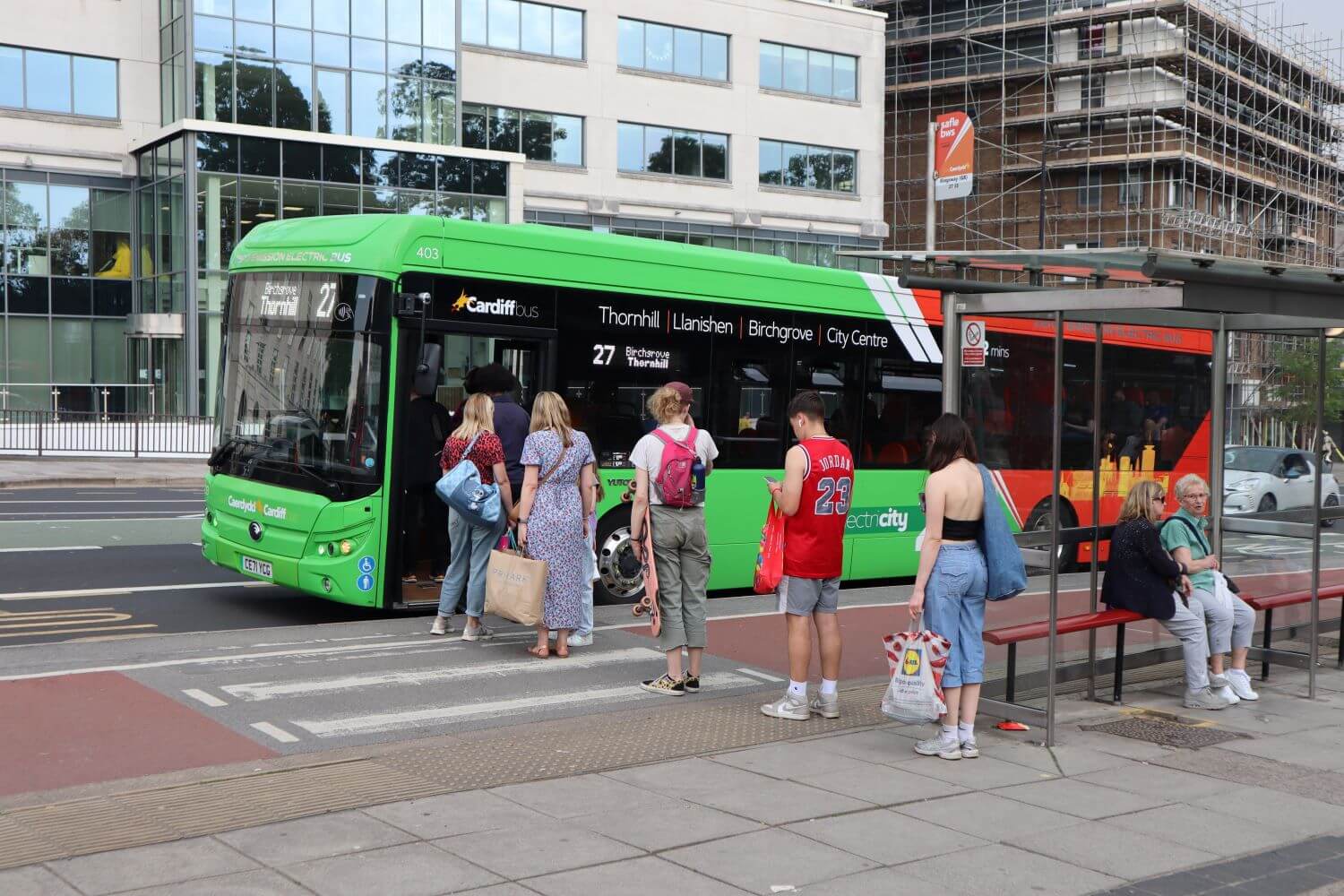
NFB has explained its more radical demands by saying it is not a case of the bus stops falling short of the guidance, believing instead they are inherently not safe and that it would be impossible to standardise the layout anyway.
NFB Street Access Campaign Coordinator Sarah Gayton says: “We know people can’t use them, and putting a bit of tactile paving down is not going to make them safe or accessible.
“It’s the wrong message to say that the existing ones can remain in position.
“They have to be removed and access has to be restored back to that pavement so blind, visually impaired, and deaf-blind people can get on and off the bus without having to cross the cycle lane. There can be no consistency because all streets are different.”
In response to the argument that these bus stop designs are safer for cyclists and overall, she says: “Cyclists can have their safe space behind the bus, they can see, so they can stop, and they can wait.
“Without floating bus stops, you would not have this constant conflict between the pedestrians and the cyclists.”
She says it is time to draw a line under the research, believing that enough is already known from focus groups to show the infrastructure is neither trusted nor safe.
Industry response
Bus Users UK has also called for a review. The charity’s Chief Executive, Claire Walters, says: “Concerns are growing about the safety of floating bus stops, particularly among organisations representing people with visual impairments.
“We need more research before extending their use and we need to rethink the current inequitable approach to sharing road space.
“We should be encouraging public, shared and active travel if we’re serious about decarbonisation and tackling congestion — not pitting these modes against each other as we continue the unsafe and unsustainable practice of prioritising private cars and parking.”
Cyclists’ view on controversial bus stop design
The cycling community is clear in its view that floating bus stops are vital to keep people on two wheels and that their existence makes the roads safer overall.
Simon Munk, Head of Campaigns and Community Development, London Cycling Campaign, says: “Floating bus stops have been extensively studied by TfL and they’re widely used without major issues in countries across Europe.
“More, existing alternatives to these designs have been extensively considered and introduce not just significant road danger issues for cycling but mean people stop cycling if deployed.
Removing floating bus stops won’t make the lives of visually Impaired people far better, but would make cycling more dangerous and lower cycling rates for women, children, disabled people, the elderly, etc – Simon Munk, London Cycling Campaign
“Can we improve roll-out and design? Undoubtedly — but, while some organisations are busy trying essentially to put an end to cycling schemes, they’re ignoring far bigger issues facing their members and communities from the status quo of our roads: missing dropped kerbs, poorly deployed tactile, junctions without pedestrian signals, driver compliance at crossings and much more.
“So, let’s be clear and coherent and honest, removing floating bus stops won’t make the lives of visually Impaired people far better, but would make cycling more dangerous and lower cycling rates for women, children, disabled people, the elderly, etc.”
Those thoughts were echoed by Duncan Dollimore, Cycling UK Head of Campaigns.
“We have bus stop bypasses to create a situation where you can have a continuous protected cycling lane,” he says.
“If you don’t have a bus stop bypass on those routes which follow a bus route, what you’re essentially doing is taking the cyclist back out into the traffic every 400-500m when there’s a bus stop, along with the buses, the cars and the lorries and the bus lane becomes of no benefit.”
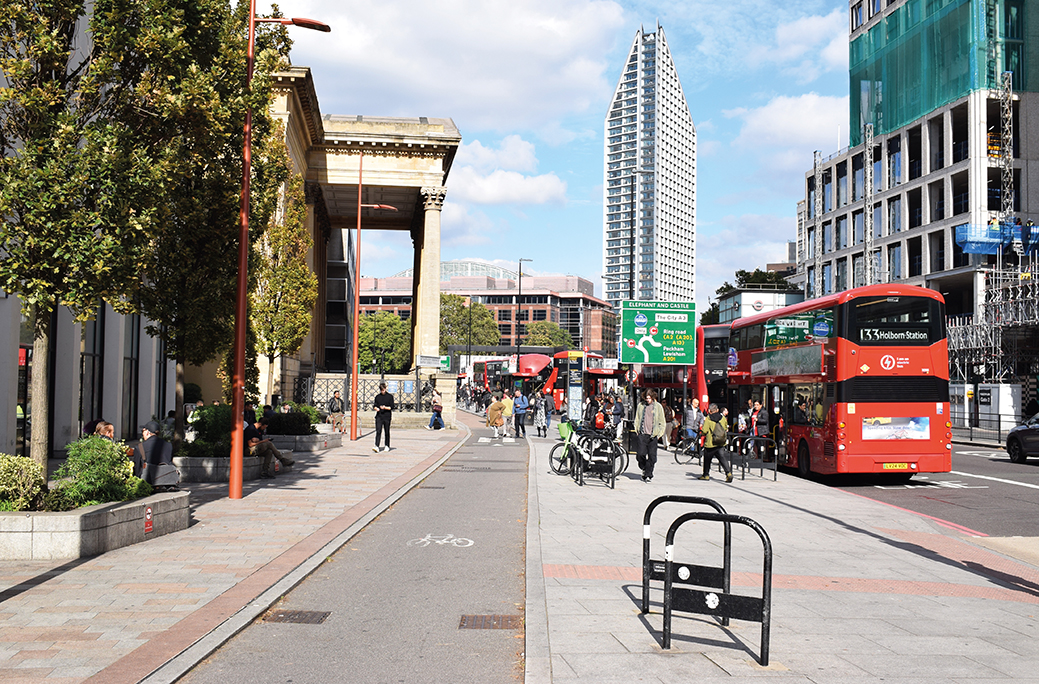
It has been suggested to instead run cycle lanes on roads parallel to bus routes, but Duncan points out that the cyclists and bus users generally want to travel down the same roads as they are the most convenient to reach the most popular destinations.
He repeats that these designs have not been controversial elsewhere in Europe, including where cycling is much more popular but adds: “It’s relatively new in the UK and we’re not very good in the UK when we introduce new infrastructure at explaining to people what it is or how to use it.”
Better engagement with the public and consultation with various groups and improved education rather than more research or a pausing of the roll-out is the answer, he believes.
Academic input from UCL
A more independent view is put forward by UCL’s 138-page report commissioned by Guide Dogs. It highlights the potential for conflict between pedestrians and cyclists, given the potentially big differences in speed and the lack of last-minute manoeuvrability of bikes.
The report concludes that various focus groups, site visits and experiments revealed a common theme is that neither floating bus stops nor shared bus stop boarders are perceived to be safe, leading some people to avoid using buses.
The main author of the study, UCL Centre for Transport Studies Director Nick Tyler, tells routeone in summary: “If I had to put my head on the block, I think I would say that the floating island itself is kind of doable, but it has certain limits on it:
“It needs to be sufficiently large that people, such as someone in a wheelchair, can manoeuvre properly within it.
“And they need to be able to accommodate the number of people that might be at the bus stop and that is a critical thing, especially for neurodivergent people.
“And we need to find a good way of making the cyclists go slowly enough. But there are a lot of ifs in there.
“The shared bus stop boarder I think is kind of not doable. The risks that imposes, in particular to people getting off the bus but also to people waiting to get on a bus by mixing them into the space being allocated to relatively fast moving cyclists – that is a disaster waiting to happen.”
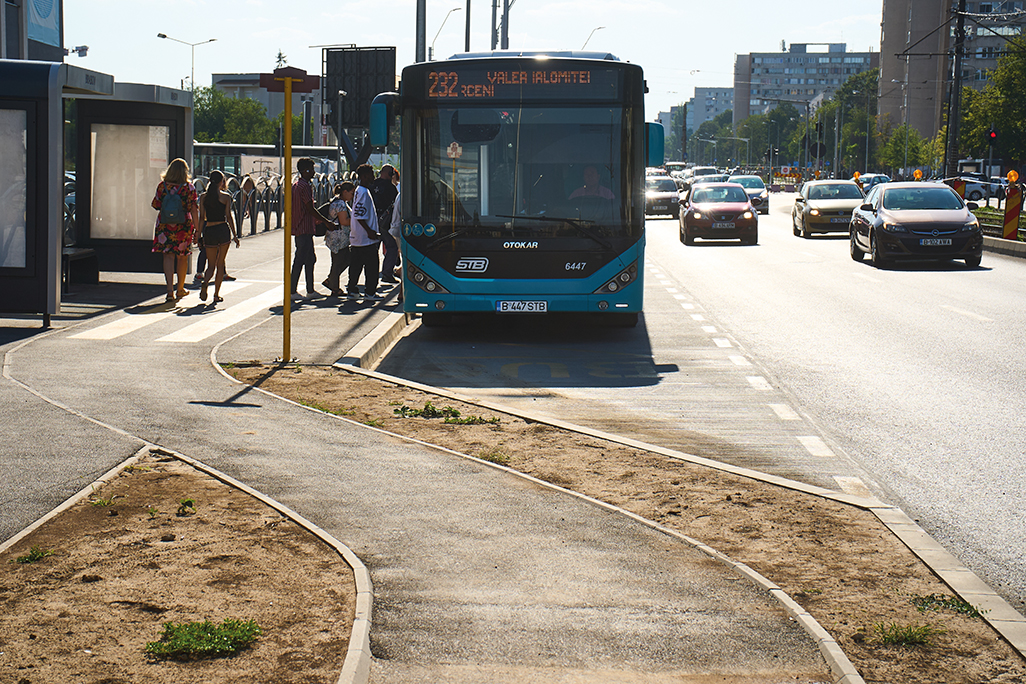
Nick stresses the need to try to accommodate every group’s movement needs.
He says: “Where you don’t have a lot of space, you have a crunch where you have to make decisions about how to allocate that space between those groups, where they have conflicting needs, and the bus stop is a good example of that.”
He talks very philosophically about the bus stop and argues that we need to think about it as much more than just a “pole in the ground”.
“I think it’s a case of realising that the bus stop is actually a piece of transport infrastructure,” he says.
“It’s the bus version of a railway station… and, just as you don’t go jumping off a station platform in a railway station, so you behave in a safe way at a bus stop.”
One particular problem, according to his research, is that — even where the design is standardised — visually impaired bus users don’t always know which way to turn on leaving the bus to find the mini zebra crossing, given that the bus does not always stop at a precise point.
As for why there seems to be more controversy over the set-up in the UK, Nick argues that where the layout seems to be working well in Europe is generally where there is more space for the infrastructure than here.
He adds: “I think there could be a culture thing. We found in Denmark that cyclists tend to stop behind the bus when it stops in the bus stop.
“There seems to be an assumption in the UK … that the cyclist shouldn’t have to stop just because the bus stops.”
He expands on the problem by alluding to the rapid increase in the popularity of cycling and of cycle lanes, saying: “What we haven’t really done, I think, is kept up with that growth in cycling with the way in which we think about the infrastructure for it.”
DfT response
Asked for comment on the subject, a DfT spokesperson says: “The safety and accessibility of our roads and pavements is an absolute priority.
“We will work with disability groups and local authorities to ensure all safety concerns are taken seriously.”





















